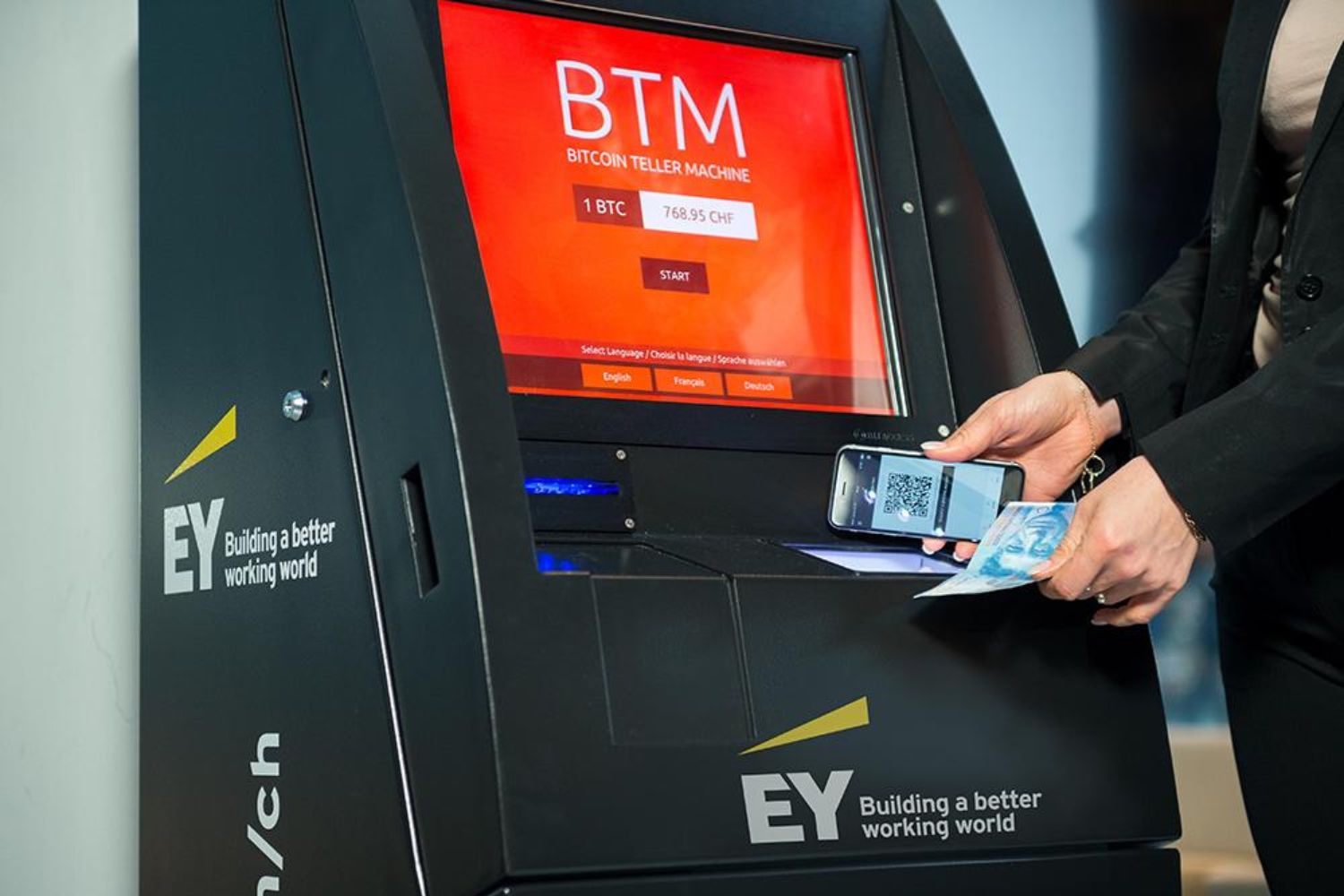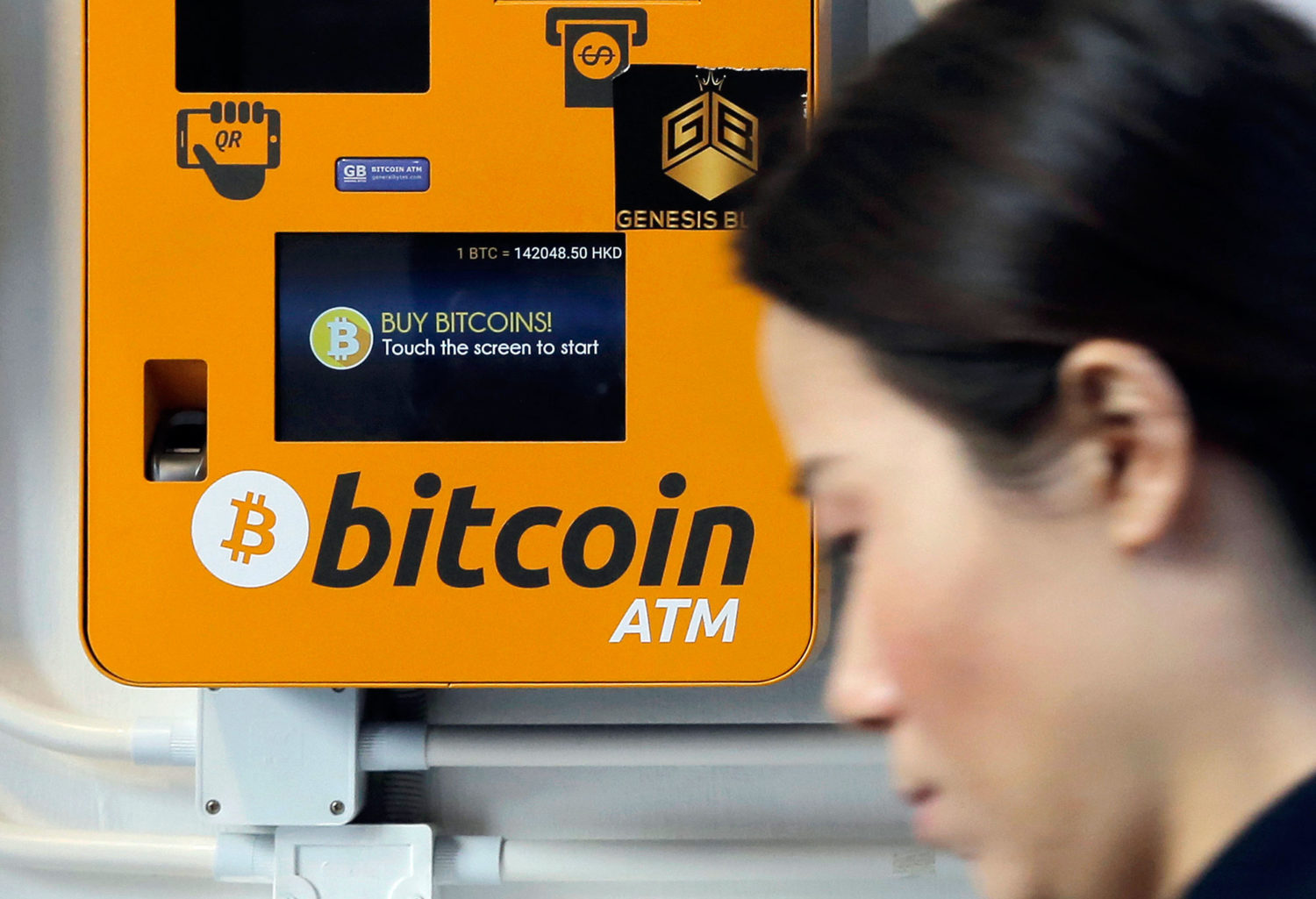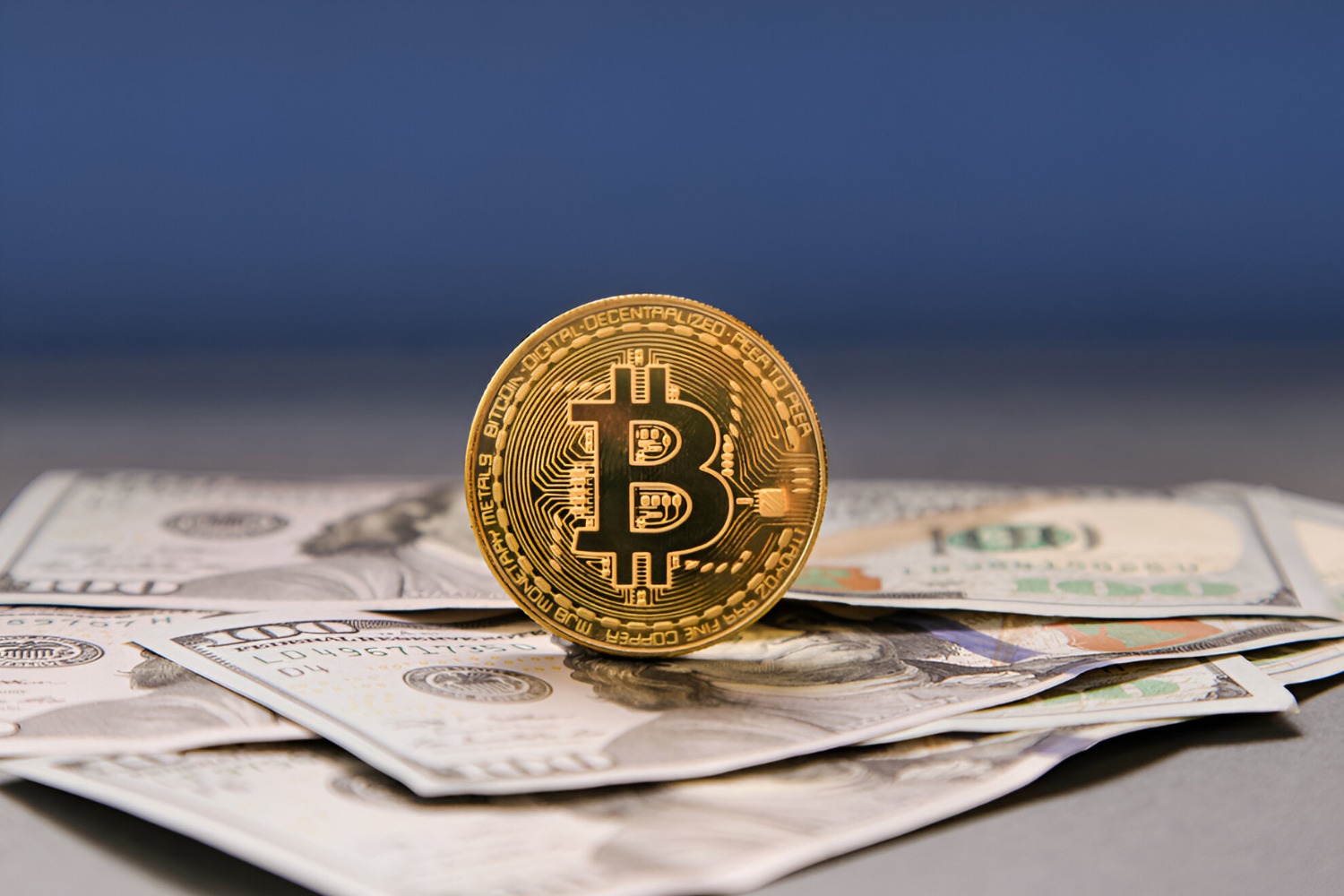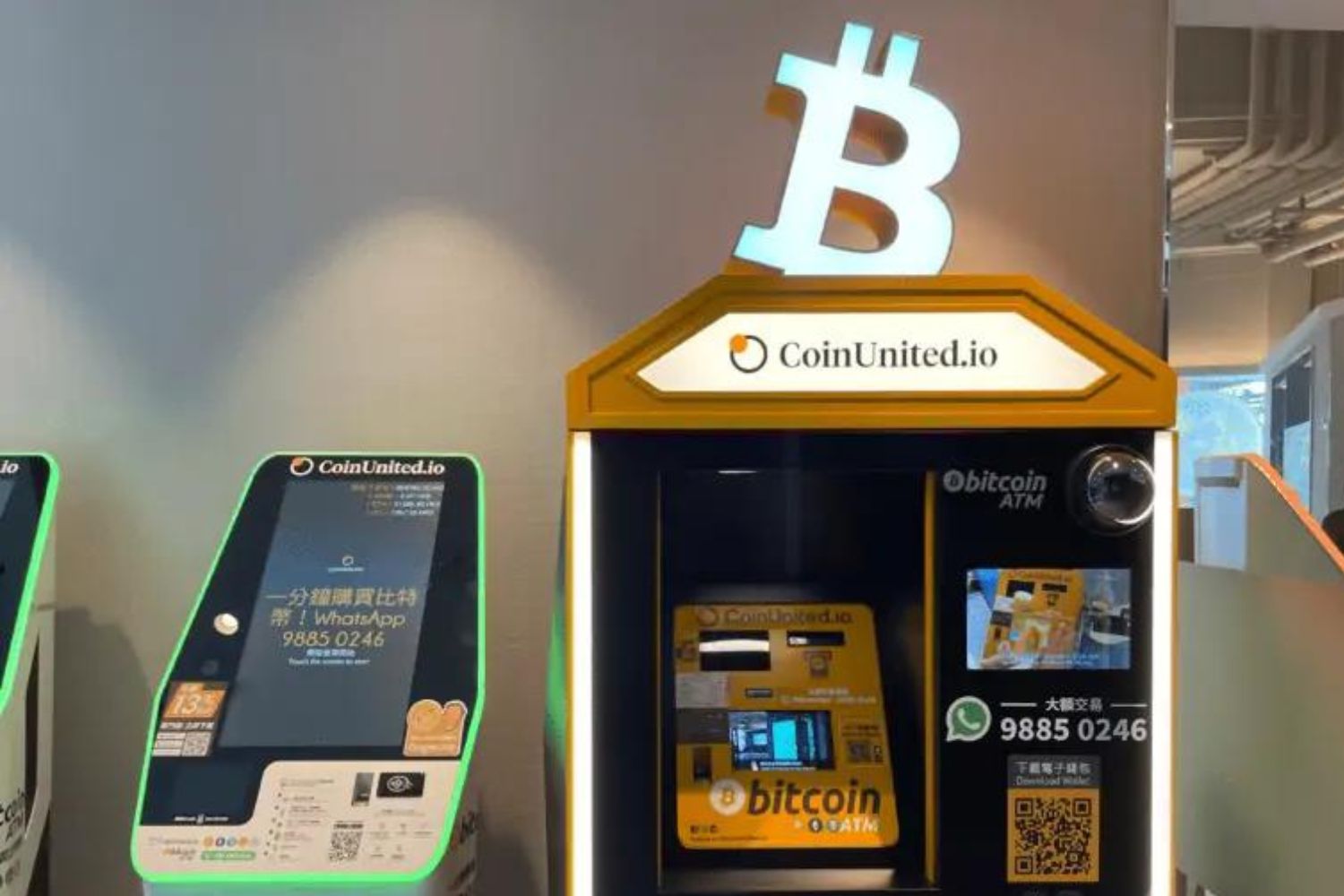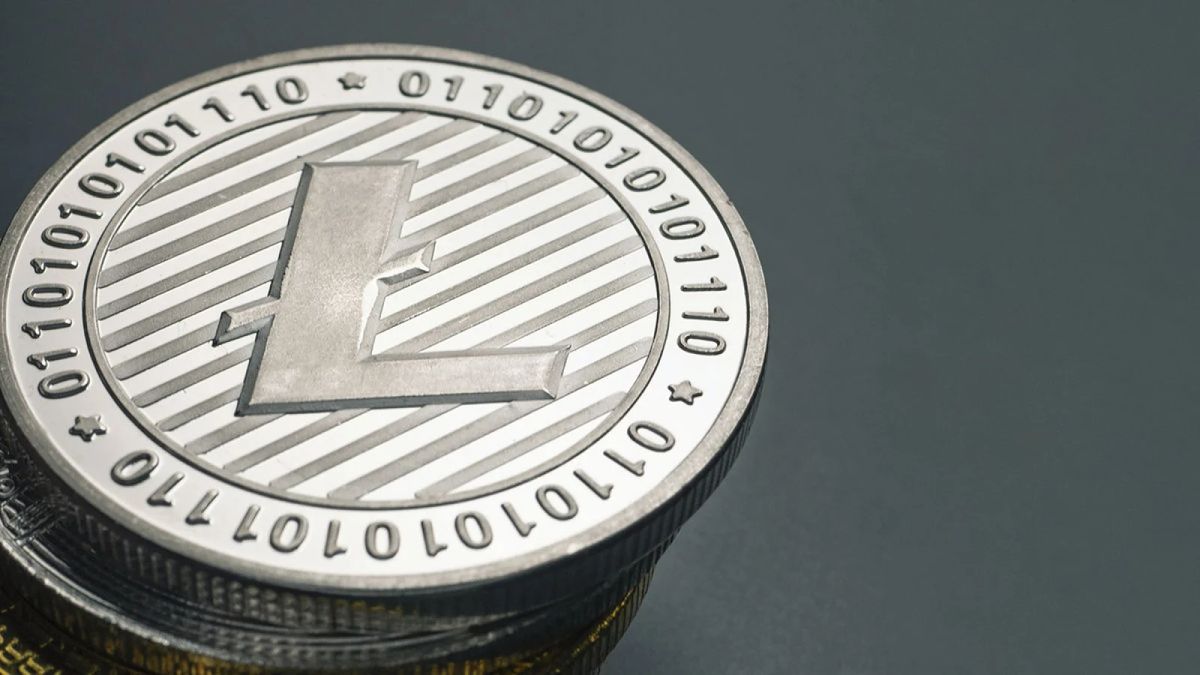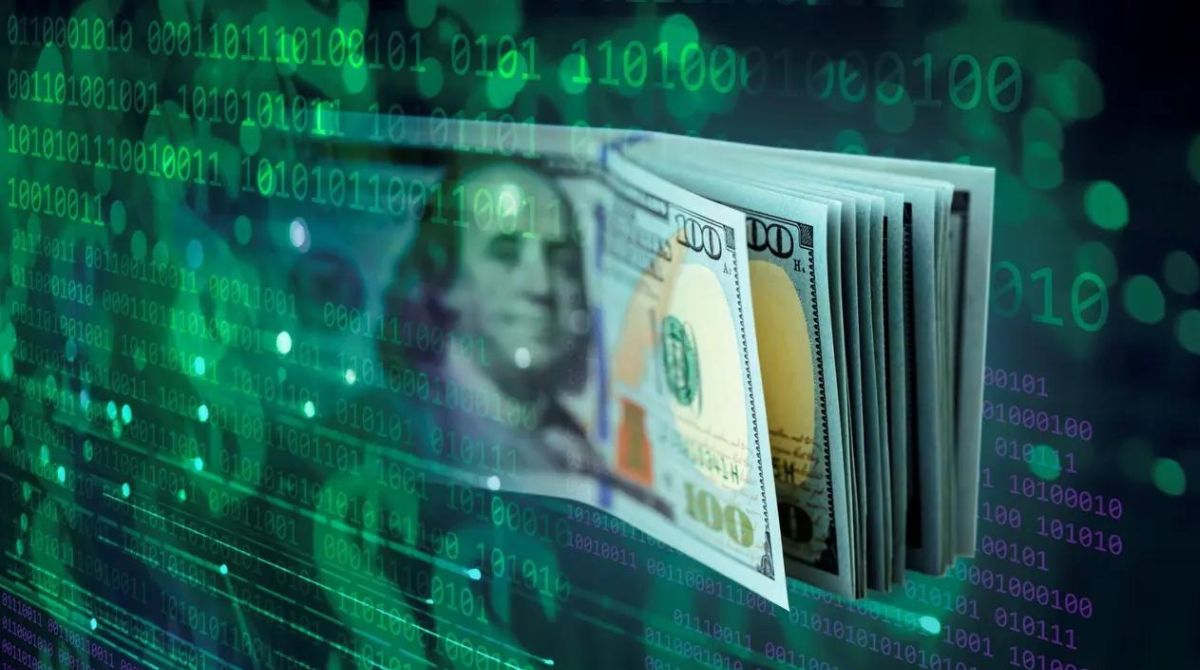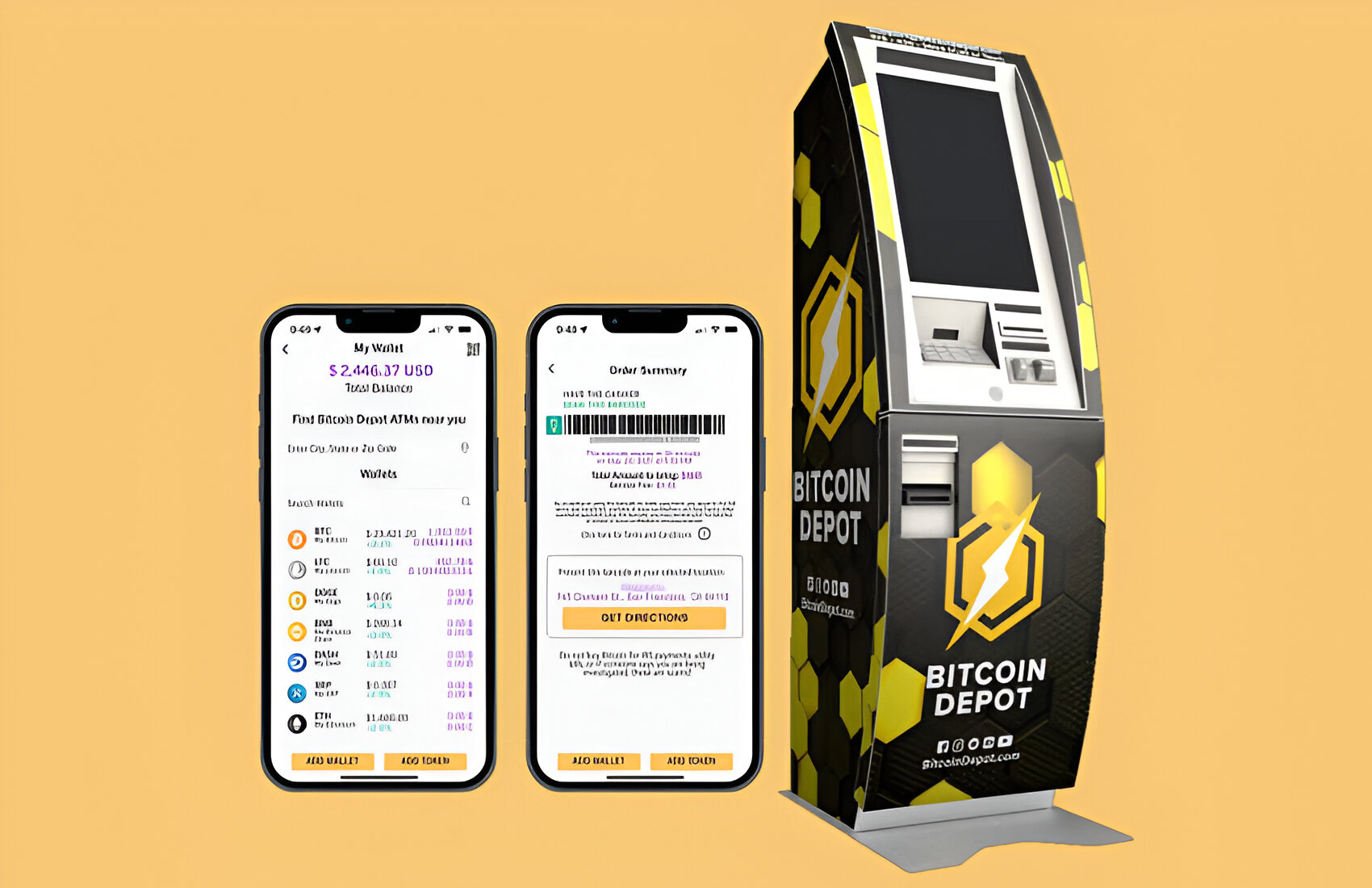The Basics of Bitcoin ATM
Bitcoin ATMs, also known as BTMs, are specialized machines that allow users to buy or sell Bitcoin using cash or debit cards. Similar to traditional ATMs, Bitcoin ATMs provide a quick and convenient way to access the world of cryptocurrencies. However, instead of dispensing cash, these machines facilitate the purchase or sale of Bitcoin. Here’s an overview of how Bitcoin ATMs work and what you need to know if you’re considering using one.
Bitcoin ATMs function as physical kiosks where users can interact with the machine to carry out cryptocurrency transactions. These machines enable individuals to convert their local currency into Bitcoin or vice versa, allowing for seamless transactions in the digital currency world.
Bitcoin ATMs come in various forms, including one-way and two-way machines. One-way ATMs only allow users to purchase Bitcoin using cash or a debit card. On the other hand, two-way ATMs provide the option to both buy and sell Bitcoin for cash or load it onto a debit card.
Operating a Bitcoin ATM involves several components. Most machines have a user-friendly interface that simplifies the process for users. A Bitcoin wallet is typically needed to store and manage the cryptocurrency. Users can either scan the QR code of their existing wallet or create a new wallet using the machine. They can then interact with the Bitcoin ATM to carry out their desired transaction.
Bitcoin ATMs are connected to the internet and communicate with various cryptocurrency exchanges to determine exchange rates and complete transactions. These machines usually charge a transaction fee that varies depending on the machine and the type of transaction being performed.
It is important to note that Bitcoin ATMs are not the same as traditional bank ATMs. While bank ATMs are typically found in easily accessible locations, Bitcoin ATMs may be more limited in their availability. However, their numbers have been steadily increasing in recent years, making it easier for individuals to find a Bitcoin ATM near them.
In the next section, we will dive deeper into the step-by-step process of using a Bitcoin ATM.
How Bitcoin ATMs Work
Bitcoin ATMs function through a combination of hardware, software, and connectivity to enable users to buy or sell Bitcoin. Understanding the inner workings of these machines can help demystify the process and make it easier for users to navigate the world of cryptocurrencies. Here’s a breakdown of how Bitcoin ATMs work:
1. User Verification: Before initiating any transaction, most Bitcoin ATMs require users to go through a verification process. This verification is necessary to comply with regulations and prevent fraudulent activities. Users may be asked to provide identification documents, such as a driver’s license or passport, as well as verify their phone number or email address.
2. Wallet Creation: If users don’t already have a Bitcoin wallet, they can create one directly at the Bitcoin ATM. The machine generates a new wallet address and provides either a QR code or a printed receipt with the necessary details. Users can then choose to scan the QR code with their mobile wallet app or save the printed receipt for future reference.
3. Transaction Selection: Once the user is verified and has a Bitcoin wallet, they can select the type of transaction they want to perform. This includes options for buying Bitcoin, selling Bitcoin, or sometimes even other cryptocurrencies. The Bitcoin ATM will display the current exchange rate and any transaction fees associated with the chosen transaction.
4. Transaction Execution: To complete the transaction, users need to insert cash into the Bitcoin ATM or choose a payment method, such as a debit card. The machine will then calculate the equivalent amount of Bitcoin based on the exchange rate and deduct any transaction fees. Once the payment is confirmed, the Bitcoin is transferred to the user’s wallet or dispensed as a paper wallet, depending on the machine type.
5. Confirmation: After the transaction is completed, the Bitcoin ATM will issue a confirmation receipt. This receipt will contain details such as the transaction ID, the value of the Bitcoin purchased or sold, and the wallet address involved. It is important for users to keep this receipt safe, as it serves as a proof of the transaction.
6. Network Connectivity: Bitcoin ATMs rely on a network connection to access current exchange rates and process transactions. The machines are usually connected to cryptocurrency exchanges or other liquidity providers to ensure the most accurate pricing. The connectivity also allows for real-time confirmation of transactions and balances.
By understanding the step-by-step process and the underlying technology, users can confidently use Bitcoin ATMs to buy or sell Bitcoin. However, it’s important to note that transaction fees, exchange rates, and availability may vary across different Bitcoin ATMs. Therefore, it is advisable to compare fees and rates before using a specific machine.
Finding a Bitcoin ATM
Finding a Bitcoin ATM is crucial for individuals who want to use these machines for buying or selling Bitcoin. While Bitcoin ATMs are not as widespread as traditional bank ATMs, their numbers have been steadily increasing around the world. Here are some ways to find a Bitcoin ATM near you:
1. Online Directories: There are several online directories specifically dedicated to listing Bitcoin ATMs. These directories allow users to search for Bitcoin ATMs based on their location. They provide information such as the machine’s address, operating hours, and supported transaction types. Popular online directories include Coin ATM Radar, CoinMap, and FindBitcoinATM.
2. Cryptocurrency Mobile Apps: Many cryptocurrency mobile apps, such as Coinbase or Coinomi, include a feature that allows users to locate nearby Bitcoin ATMs. These apps utilize the user’s location to display a map with the nearest Bitcoin ATMs marked. Some apps also provide additional information, such as fees and supported cryptocurrencies.
3. Bitcoin ATM Operators: Bitcoin ATM operators often have their own websites or online platforms where they list the locations of their machines. These platforms may provide additional information, such as the operator’s contact details and any special promotions or discounts available at specific Bitcoin ATMs.
4. Social Media and Forums: Bitcoin enthusiasts often share information about newly installed Bitcoin ATMs on social media platforms or cryptocurrency forums. Following relevant social media accounts or participating in cryptocurrency communities can provide up-to-date information on the latest Bitcoin ATM locations and any user experiences.
5. Crypto Events and Conferences: Attending cryptocurrency events or conferences can be an excellent way to discover new Bitcoin ATM locations. Many Bitcoin ATM operators or service providers actively participate in these events to promote their machines and expand their network. These events may also offer opportunities to learn more about the functionality and security features of Bitcoin ATMs.
When searching for a Bitcoin ATM, it’s important to consider factors such as the machine’s proximity, availability of parking, and operating hours. Additionally, users should take note of any fees associated with the Bitcoin ATM, as these can vary from machine to machine. It is advisable to compare fees and rates to ensure a favorable transaction experience.
Once you have located a nearby Bitcoin ATM, you can embark on your cryptocurrency journey and take advantage of the convenience and accessibility these machines offer. In the next section, we will explore the step-by-step process of using a Bitcoin ATM.
Step-by-Step Process of Using a Bitcoin ATM
Using a Bitcoin ATM may seem daunting at first, but with a step-by-step guide, it becomes a straightforward process. Whether you’re a cryptocurrency enthusiast or a beginner looking to explore the world of digital currencies, here’s a breakdown of how to use a Bitcoin ATM:
Step 1: Find a Bitcoin ATM: Use online directories, cryptocurrency mobile apps, or social media platforms to locate a Bitcoin ATM near you. Take note of its address, operating hours, and any additional information provided.
Step 2: Prepare Your Documents: Many Bitcoin ATMs require user verification to comply with regulations. Make sure to bring along an identification document, such as a driver’s license or passport. Some machines may also require you to verify your phone number or email address.
Step 3: Set Up Your Bitcoin Wallet: If you don’t already have a Bitcoin wallet, you can create one directly at the Bitcoin ATM. Follow the on-screen instructions to generate a new wallet address. The machine may provide a QR code for scanning or a printed receipt with the necessary details.
Step 4: Begin the Transaction: Select the type of transaction you want to perform on the Bitcoin ATM. Options usually include buying Bitcoin, selling Bitcoin, or sometimes even other cryptocurrencies. The machine will display the current exchange rate and any associated transaction fees.
Step 5: Insert Cash or Choose Payment Method: Depending on the type of transaction, you may need to insert cash into the Bitcoin ATM or choose a payment method, such as a debit card. The machine will calculate the equivalent amount of Bitcoin based on the exchange rate and deduct any transaction fees.
Step 6: Confirm the Transaction: Once you’ve completed the payment, review the transaction details shown on the Bitcoin ATM screen. Double-check the wallet address and the amount of Bitcoin being purchased or sold. If everything looks correct, proceed with confirming the transaction.
Step 7: Receive Confirmation and Receipt: After the transaction is completed, the Bitcoin ATM will issue a confirmation receipt. This receipt serves as proof of the transaction and contains details such as the transaction ID, the value of the Bitcoin involved, and the wallet address. Keep this receipt safe for future reference.
Step 8: Monitor Your Bitcoin Wallet: Once the transaction is confirmed, you should monitor your Bitcoin wallet to ensure that the purchased or sold Bitcoin reflects in your balance. Bitcoin transactions typically require a few confirmations on the blockchain before they are fully processed, so it may take some time for the transaction to be completed.
Step 9: Enjoy Your Bitcoin: Now that you have successfully used a Bitcoin ATM, you can enjoy the benefits of owning or selling Bitcoin. You can use your Bitcoin to make online purchases, trade on cryptocurrency exchanges, or securely store it in your wallet for future use.
Using a Bitcoin ATM is a convenient and accessible way to get involved in the world of cryptocurrencies. However, it is essential to note that transaction fees, exchange rates, and availability may vary across different Bitcoin ATMs. Therefore, it is advisable to compare fees and rates before using a specific machine.
In the next sections, we will explore the benefits of using a Bitcoin ATM, as well as the limitations and risks associated with these machines.
Benefits of Using a Bitcoin ATM
Bitcoin ATMs offer several advantages that make them an appealing option for individuals looking to buy or sell Bitcoin. Here are some of the benefits of using a Bitcoin ATM:
1. Accessibility: Bitcoin ATMs provide a convenient way for anyone to participate in the cryptocurrency market. Unlike online exchanges that may have registration requirements or long processing times, Bitcoin ATMs allow users to quickly and easily purchase Bitcoin using cash or a debit card. This accessibility is particularly beneficial for individuals who may not have access to traditional banking services or prefer to conduct transactions in person.
2. Instant Transactions: Bitcoin ATMs enable users to instantly complete their transactions. Once the payment is confirmed, the Bitcoin is either transferred directly to the user’s wallet or dispensed as a paper wallet. This real-time processing eliminates the need for waiting periods commonly associated with online exchanges and allows users to take immediate ownership of their Bitcoin.
3. Anonymity: While Bitcoin transactions are recorded on the blockchain and are inherently pseudonymous, Bitcoin ATMs offer an additional layer of privacy. Many Bitcoin ATMs do not require users to provide their personal information beyond basic verification requirements, such as scanning an ID or verifying their phone number. This anonymity can be attractive to individuals who value their privacy or prefer to keep their cryptocurrency activities separate from their personal identity.
4. Cash-Based Transactions: Bitcoin ATMs that accept cash provide users with the ability to convert physical currency directly into Bitcoin. This cash-centric approach allows individuals who prefer cash transactions or do not have a bank account to participate in the cryptocurrency market. It also offers an alternative to individuals who may have security concerns when linking their bank accounts or credit cards to digital platforms.
5. Education and Onboarding: Bitcoin ATMs often display educational materials and on-screen guides to assist users in understanding the basics of Bitcoin and how to use the machine. These resources can be beneficial, especially for newcomers to the cryptocurrency world. Bitcoin ATMs provide a hands-on learning experience and help individuals gain confidence in navigating the world of digital currencies.
6. Increased Adoption: The presence of Bitcoin ATMs in public spaces, such as shopping malls or convenience stores, helps raise awareness about cryptocurrencies and promotes their adoption. These visible physical machines serve as a tangible representation of the growing acceptance of Bitcoin in mainstream society. Bitcoin ATMs can spark curiosity and encourage individuals to explore the benefits of cryptocurrencies further.
Using a Bitcoin ATM offers a convenient, quick, and accessible way to buy or sell Bitcoin. However, it is important to keep in mind that Bitcoin ATMs may have transaction fees and exchange rates that can vary between machines. Therefore, it is recommended to compare fees and rates before using a specific Bitcoin ATM.
In the next section, we will discuss the limitations and risks associated with using Bitcoin ATMs to provide a comprehensive view of this cryptocurrency service.
Limitations and Risks of Bitcoin ATMs
While Bitcoin ATMs offer convenience and accessibility, it’s essential to be aware of their limitations and associated risks. Understanding these factors can help users make informed decisions when using Bitcoin ATMs. Here are some of the limitations and risks to consider:
1. Limited Accessibility: Bitcoin ATMs may not be as widely available as traditional bank ATMs. Their distribution is often concentrated in urban areas or specific regions, making it challenging for individuals in rural or remote locations to access these machines. It’s crucial to check the availability of Bitcoin ATMs in your area before relying on them for cryptocurrency transactions.
2. Transaction Fees: Bitcoin ATM operators charge transaction fees to cover operational costs, such as machine maintenance and connectivity expenses. These fees can vary significantly between machines and may be higher than fees associated with online cryptocurrency exchanges. Users should be aware of the transaction fees before proceeding with a transaction to ensure transparency and to assess the overall cost.
3. Exchange Rates: Bitcoin ATMs determine the exchange rate at which they convert local currency into Bitcoin or vice versa. These rates may not always be competitive compared to online exchanges or other cryptocurrency trading platforms. It’s recommended to compare exchange rates across different Bitcoin ATMs to ensure getting the best value for your money.
4. Security Concerns: While Bitcoin ATMs aim to provide a secure environment for transactions, they are not immune to security risks. Users should exercise caution when using Bitcoin ATMs to protect their wallets and personal information. It’s imperative to ensure that the Bitcoin ATM is installed in a reputable location and has adequate security measures in place.
5. Limited Regulation: The regulatory framework surrounding Bitcoin ATMs is still evolving in many jurisdictions. This can result in varying levels of compliance and oversight. Users should be cautious and ensure they are using Bitcoin ATMs operated by licensed and trustworthy entities. Additionally, it’s important to familiarize oneself with the legal and tax implications of cryptocurrency transactions in their respective jurisdictions.
6. Transaction Limits: Bitcoin ATMs often impose transaction limits to comply with regulatory requirements and ensure their operational efficiency. These limits may apply to both the minimum and maximum transaction amounts. Users planning to conduct large transactions may need to consider alternative methods, such as cryptocurrency exchanges or over-the-counter (OTC) trading, which may better cater to their needs.
7. Volatility of Bitcoin: Bitcoin is known for its price volatility, and this can impact the value of transactions conducted through Bitcoin ATMs. Fluctuations in Bitcoin prices can occur between the time a transaction is initiated and when it is confirmed on the blockchain. Users should be aware of this volatility and consider it when buying or selling Bitcoin at a Bitcoin ATM.
By understanding the limitations and risks associated with Bitcoin ATMs, users can take necessary precautions and make informed decisions. It is advisable to conduct thorough research, compare fees and rates, and exercise caution when using Bitcoin ATMs for cryptocurrency transactions.
In the next section, we will explore the future prospects and developments of Bitcoin ATMs.
Future of Bitcoin ATMs
The future of Bitcoin ATMs holds promising potential as cryptocurrencies continue to gain traction and blockchain technology evolves. Here are some developments and trends that may shape the future of Bitcoin ATMs:
1. Increased Adoption: As awareness and acceptance of cryptocurrencies grow, the demand for Bitcoin ATMs is likely to increase. More businesses and individuals may recognize the benefits of easy access to cryptocurrencies and invest in Bitcoin ATMs. This expansion could lead to a wider distribution of machines, making them more accessible to users worldwide.
2. Improved User Experience: Bitcoin ATM operators are continuously working on enhancing the user experience. This includes developing user-friendly interfaces, improving transaction speed, and integrating additional features such as multi-currency support. These advancements aim to attract new users and provide a seamless and convenient experience for both novice and experienced cryptocurrency enthusiasts.
3. Integration of Additional Cryptocurrencies: While Bitcoin is currently the most widely supported cryptocurrency in Bitcoin ATMs, we can expect to see the addition of other popular cryptocurrencies in the future. The integration of altcoins such as Ethereum, Litecoin, and Ripple would provide users with more diversified options and cater to the growing demand for alternative digital assets.
4. Regulatory Compliance: The regulatory landscape governing cryptocurrencies and Bitcoin ATMs is still developing. As governments and regulatory bodies establish clearer guidelines, Bitcoin ATMs are likely to become more compliant with KYC (Know Your Customer) and AML (Anti-Money Laundering) regulations. This compliance will enhance transparency and security, fostering trust among users and regulatory authorities.
5. Enhanced Security Measures: Bitcoin ATM operators are continually implementing advanced security measures to protect users’ private keys and personal information. This includes the deployment of secure hardware devices, encryption techniques, biometric authentication, and adherence to best security practices. These measures aim to address concerns and enhance the overall security protocols of Bitcoin ATMs.
6. Integration with Online Exchanges: Collaborations between Bitcoin ATM operators and online cryptocurrency exchanges could offer an integrated user experience. This integration would allow users to seamlessly transfer funds between Bitcoin ATMs and online exchange accounts. Users can then benefit from the convenience of purchasing and selling cryptocurrencies through ATMs while having the flexibility to manage their funds on online platforms.
7. Global Standardization: With the increasing popularity of Bitcoin ATMs, efforts may be made towards establishing global standards for both machine functionalities and security practices. Standardization would promote interoperability and ensure a consistent user experience irrespective of location, fostering trust and reliability in Bitcoin ATMs worldwide.
The future of Bitcoin ATMs is bright, driven by the continuous advancements in technology, evolving user demands, and the maturing cryptocurrency market. As these machines become more widely available and user-friendly, they are expected to play an increasingly significant role in enabling broader adoption and usage of cryptocurrencies.
In the next section, we will address some frequently asked questions about Bitcoin ATMs to provide further clarity and insights.
Frequently Asked Questions about Bitcoin ATMs
Here are answers to some common questions related to Bitcoin ATMs:
Q: What is a Bitcoin ATM?
A: A Bitcoin ATM is a specialized machine that allows individuals to buy or sell Bitcoin using cash or a debit card. It provides a physical interface for users to interact with and facilitates transactions between local currency and Bitcoin.
Q: Where can I find a Bitcoin ATM?
A: Bitcoin ATMs are typically listed in online directories dedicated to cryptocurrency services. You can use these directories, cryptocurrency mobile apps, or social media platforms to find Bitcoin ATMs near your location.
Q: Do I need a wallet to use a Bitcoin ATM?
A: While some Bitcoin ATMs allow you to create a new Bitcoin wallet directly at the machine, it’s recommended to have a wallet beforehand. You can either install a mobile wallet app on your smartphone or set up a software wallet on your computer.
Q: What are the fees associated with Bitcoin ATMs?
A: Bitcoin ATMs charge transaction fees that can vary between machines and operators. These fees cover the costs of operating the machines and providing the service. It’s essential to check the fee structure of the Bitcoin ATM you plan to use before completing a transaction.
Q: Are Bitcoin ATMs anonymous?
A: Bitcoin ATMs can offer a certain level of anonymity, as some of them require minimal verification, such as scanning an ID or phone number confirmation. However, it’s important to note that transactions on the Bitcoin blockchain are public and can be traced, so complete anonymity should not be assumed.
Q: Can I sell Bitcoin at a Bitcoin ATM?
A: Many Bitcoin ATMs provide the option to sell Bitcoin and receive cash in return. However, not all Bitcoin ATMs have this functionality, so it’s essential to verify whether selling Bitcoin is supported by the specific machine you plan to use.
Q: Can I buy other cryptocurrencies at a Bitcoin ATM?
A: While Bitcoin is the most commonly supported cryptocurrency in Bitcoin ATMs, some machines also offer the option to buy other popular cryptocurrencies. These may include Ethereum, Litecoin, and Ripple, among others. It’s advisable to check the supported cryptocurrencies before using a Bitcoin ATM.
Q: Are Bitcoin ATMs secure?
A: Bitcoin ATM operators are continuously improving security measures to protect users’ private keys and personal information. However, it’s essential for users to exercise caution, choose reputable Bitcoin ATMs, and follow best security practices, such as using secure wallets and ensuring the machine is installed in a trusted location.
Q: Are there transaction limits at Bitcoin ATMs?
A: Yes, Bitcoin ATMs often have transaction limits in place, both for minimum and maximum transaction amounts. These limits may vary between machines and operators, so it’s advisable to check the limits before initiating a transaction.
Q: Are Bitcoin ATMs regulated?
A: The regulatory landscape surrounding Bitcoin ATMs is still evolving in many jurisdictions. Some countries have specific regulations in place, while others are in the process of developing regulatory frameworks. It’s important for users to be aware of the legal and tax implications of cryptocurrency transactions in their respective jurisdictions.
These answers provide a general overview of Bitcoin ATMs, but it’s important to note that specific details and functionalities may vary between different machines and operators. It’s recommended to research and familiarize yourself with the specific Bitcoin ATM you plan to use before engaging in any transactions.







